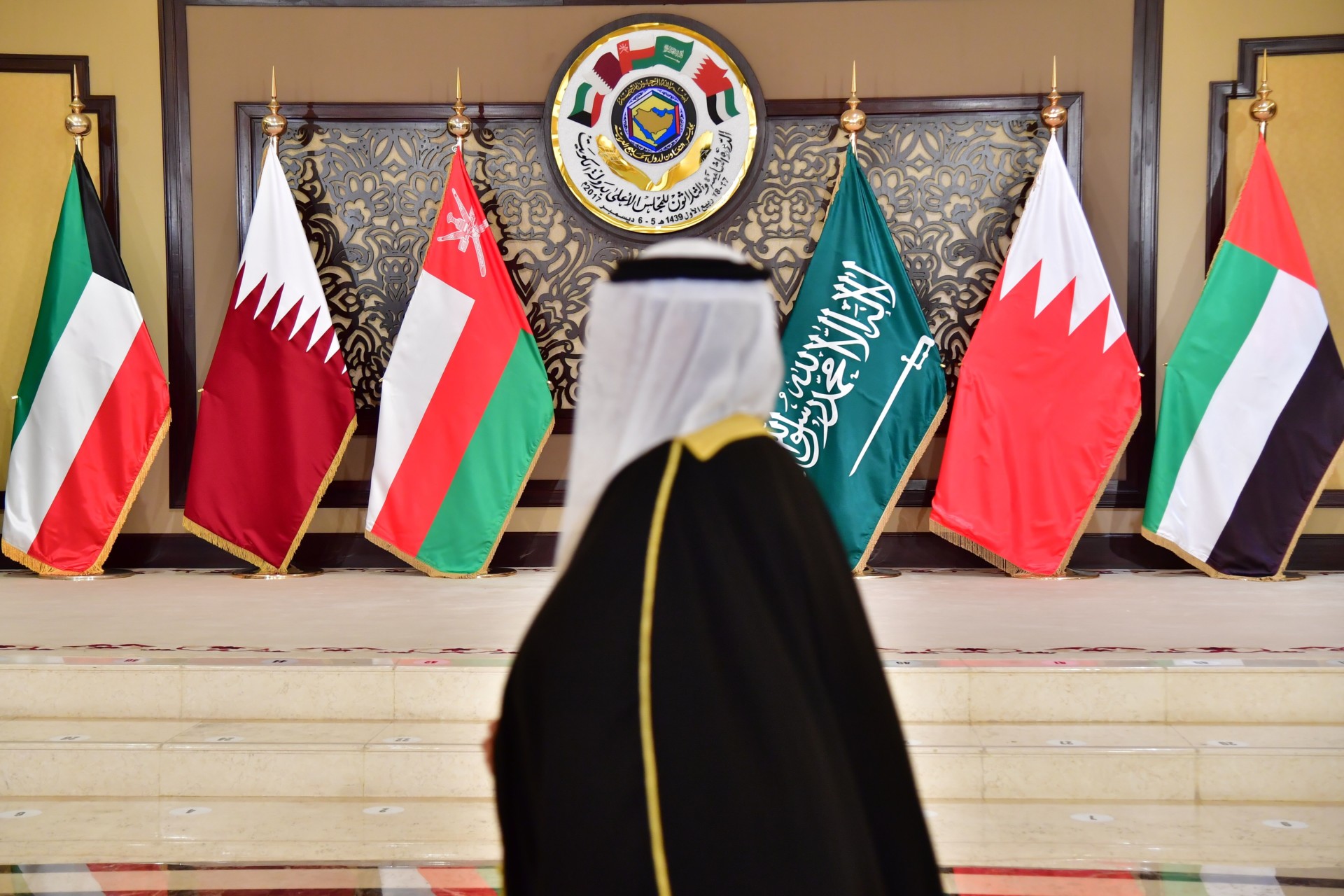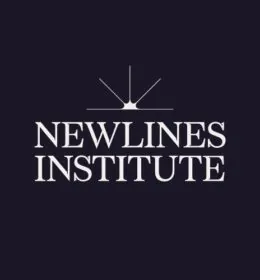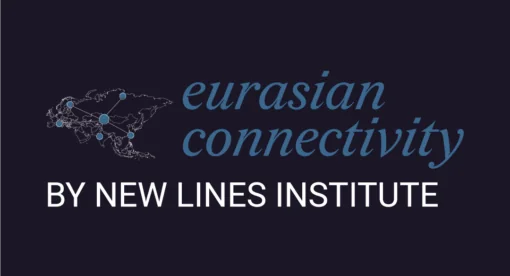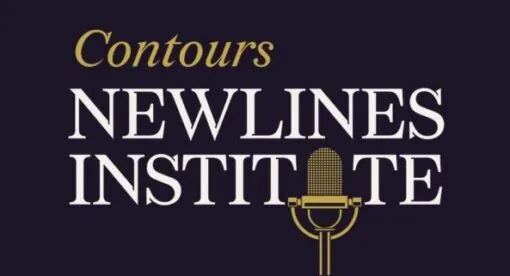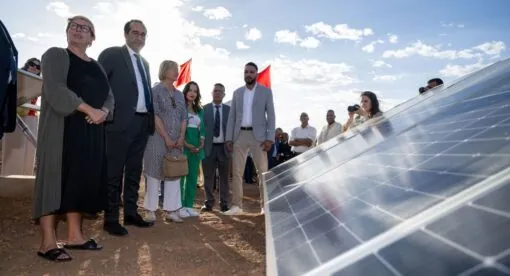The United States cannot disconnect from the Middle East, which never ceases to be a theater for foreign policy competitions, geopolitical bargaining, and business and investment projects. On the downside, there are civil unrest, religious upheavals, and transnational security threats. While the world and the region go through a COVID-19 pandemic-related social transformation, it is timely to look at economic, political, societal, and geopolitical trends in this region and evaluate the outlook toward 2030.
The political economy of Middle Eastern nations is too diverse to put in one mold, but it is safe to say that a desire for transformation is sweeping across the region. Resource-rich nations are undertaking long-overdue economic diversification reform programs as commodity markets become increasingly risky. In resource-poor nations, debt, fiscal constraints, and ineffective governance have instigated public anger and mistrust that is too strong for politicians to overcome with simple political concessions.
Geopolitical developments in the region are changing rapidly, and leave stakeholders such as businesses and governments with the need for updated analyses and close monitoring. The fabric of society is also rapidly transforming, making forecasting and mitigating the public response to policies much more complex, both for national leaders and for foreign powers who aim to assert influence on these states.
As blocs of regional powers jockey for dominance, opportunities for the United States to exert its traditional hard power in the region are diminishing, but business, technology, education, health care, and economic development remain attractive avenues of engagement. As a result, U.S. policymakers and business leaders need up-to-date, accurate and rapid information and incisive analysis more than ever.
Political Economy
Sources of revenue in the political economy in the Middle East are very diverse. While the structural economic issues are pervasive, academic literature and publications of international financial institutions put strong emphasis on distribution, growth, liberal market development, and employment. At the heart of the topic lies the distinction between resource-rich and non-resource-rich countries. Resource-rich countries of the Middle East include the Gulf States, Iraq, Iran, Libya, and Algeria. With the increased use of oil and natural gas as an energy source since the 1950s, the system of rent from natural resources dominated the revenue generation of these states. In the following decades, the political economy of these states became fully enmeshed with the extractive sector, and the term “Arab social contract” was coined to distinguish the state-people interaction from the classical social contract theory.
The current political economy of resource-rich states in the Middle East is associated with subsidies, an extensive public sector, generous social safety mechanisms, high dependence on the commodity sector at the detriment of other sectors, and a rising youth unemployment even among the educated cohorts. But as oil prices have plummeted and OPEC’s clout has shrunk in world markets, many of these states, especially Gulf Cooperation Council (GCC) members, have begun implementing reforms to transition to a non-rentier, information-based, post-industrial economic system.

Such initiatives require governments to unravel entrenched patronage systems and crony networks and to replace them with new economic models. Dependent on oil and gas exports for decades, the Middle Eastern petrostates are facing difficulties in developing a culture of work ethic or a system of the rule of law that would attract and ensure the safety of foreign investments in non-extractive sectors. Moving ahead, policymakers in these countries should look to empower the middle classes, establish institutionalized rule of law, dilute the influence of religious circles, and create mechanisms to get rid of nepotism.
In the past decade there have been promising developments in the region. World Bank rankings show that these economies, particularly those of the GCC, have remarkably improved their Ease of Doing Business scores. The key in any reform is the quality of leadership, the quality of personnel, and funding. Using post-Soviet reforms in Eastern Europe as a reference, we know that the caliber of decision makers, speed, and adaptability are important both from a leadership and institutional perspective. The United States and international financial institutions can assist the privatization efforts and liberal market reforms in these economies. In many sectors, U.S. companies are world leaders because their products and services have high technology and knowledge components and above-average added value with the advantage of transferable know-how.
U.S. technical assistance programs and companies can aid in spearheading the development of non-extractive sectors in these economies. The U.S. Chamber of Commerce, for instance, has already been executing many programs with GCC countries with these objectives. Health care, education, finance, construction, renewable energy, retail, entertainment, tourism, and luxury goods all are sectors with potential to grow.

The political economy of non-resource-rich countries of the Middle East, on the other hand, portrays a different outlook for the next decade. Countries like Morocco, Tunisia, Egypt, Lebanon, and Jordan fall into this category, where the economic growth is not obtained through value extraction from natural resources but through direct taxation. These countries are identified as “labor-abundant, resource-constrained,” and their paths of growth have been different than the resource-rich economies. Since the 1980s, privatizations and private-sector development set the theme in these economies, yet the literature suggests that “economic liberalization in the absence of meaningful political reform gave rise to crony capitalism, and privileged elites captured much of the gains of privatization, macroeconomic growth, and increased trade.”
Today, as a consequence, these countries suffer from corruption, unequal distribution of public resources, inefficient administration, increased debt, and constrained fiscal situations. These problems have formed the foundation of civil unrest and lack of trust in politicians among the public. The biggest evidence came during the Arab Spring in the early 2010s, but these grievances are still continuing. In Lebanon, most recently, mismanagement and inefficient public administration led to the massive Aug. 4 explosion in Beirut that cost many lives.
Debt reduction and sustainable solutions to fiscal constraints will be the top issues for these countries in the future. Negotiations with international financial institutions and lenders like the International Monetary Fund will be crucial. The United States can also play an important role through the channel of bilateral business promotion and foreign direct investment. However, the macroeconomic, financial, and fiscal issues are not sufficient by themselves as long as political, social, and religious developments are not addressed.
Social Fabric, Regime Legitimacy & the Role of Religion
Recent social and political transformations have changed Middle East states. In resource-rich countries that kicked off their economic transformation processes, the key societal challenge is to adapt the public to the new realities.
Generous government subsidies and welfare systems have up to now been the basis of the Arab social contract. Once removed – a necessary step in creating a freer and more competitive society – the ruling elites should brace themselves for alternative power centers emerging that could threaten their legitimacy. As the reforms are implemented, some instances of social unrest may be inevitable, but policy packages that include expanding societal participation in policy development, empowerment of youth and women, more transparent and responsible security forces, a diversified media environment, and public information campaigns to prevent another Arab Spring should go a long way. COVID-19 is the crisis that allows many reform opportunities in the region: in health care, social safety net, economic policy, law enforcement and beyond.

For the ruling elites, it is imperative to initiate political reforms or risk losing their political legitimacy or control through a popular, and likely violent, uprisings. Therefore, elites should refrain from cracking down on protest and sparking another Arab Spring moment as much as they can. Instead, they should commit to gradually introducing progressive reforms to back up their economic transformation – without losing control and triggering violence. While certain entrenched elites may suffer, a more competitive and open economy with a more transparent and socially responsive and effective governance will benefit popular social and economic groups and their leaders.
As economic constraints grow in non-resource-rich countries, unrest in public and lack of trust in government is mounting. The past two years have seen frequent protests in Egypt, Lebanon and in many other countries over price hikes in essential foods like bread and eggs, ineffective public services, and lack of jobs. In Egypt, Muslim Brotherhood protests demanding the resignation of President Abdel Fatah el-Sisi were met with heavy law enforcement crackdowns and infringement of civil freedoms.
In Lebanon, similarly, mass protests against decades-old inefficient public management and corruption prevailed under the system of sectarian power sharing dominated by the Iranian-sponsored Hezbollah. People from all religious sects came together to express their discontent with the failing government. This moment was regarded as historic, as in Lebanon, sectarian groups have been living geographically and culturally separated, and rarely united for a joint cause. With the latest wave of protests, we see that this is changing and the role of religion-based identity seems to be losing appeal.

Additionally, the political Islam in the region seems to be fragmenting, with Islamist movements becoming less powerful and more localized. A 2019 survey of the MENA region by the Arab Barometer research network showed that since 2013, the number of people across the region identifying as “not religious” rose from 8% to 13%. The greatest rise was found in people younger than 30, 18% of whom self-identified as not religious.
While significant numbers of youth have been drawn to radical organizations in the past, including Al Qaeda and ISIS, there has also been a growth of civil society activism, which has not gotten enough attention. Changing demographics due to a sustained (and in some places increased) youth bulge will lead to changes in the political and ideological landscapes. This, coupled with growing global interconnectedness, will lead to young people becoming less susceptible to radical ideologies and growth in demand for better governance and economic opportunities.
Growing global connectivity through continued technological advances coupled with increasing education levels – to varying degrees – will accelerate changes to societal norms that are currently underway. Certainly, these transformations will differ from country to country given the variance in local cultures and religious interpretations – Yemen will evolve quite differently from Lebanon. That said, very few places will remain immune to the global forces impacting regional dynamics. The many non-state actors currently occupying social spaces will be forced to evolve. Countries with relatively better economies will see greater social development, while weak economies and collapsed states will be where radical actors will continue to find ample room to operate.
Social media’s reach and impact among youth is set to grow. According to a 2019 annual survey on social network use in the Middle East published by the University of Oregon School of Journalism in January 2020, half of Arab youth say they get their news on Facebook daily, ahead of other channels such as TV and newspapers. Whether for purposes of organizing protests or for obtaining news, or getting connected to the world, the use of social media will remain important in the socio-political aspect of Middle Eastern youth.
Over the course of this decade, social media will increasingly aid in the mobilization of young people around ideas of societal change. We are already seeing this in the fresh waves of large public protests in countries like Algeria, Sudan, Lebanon, and Iraq that were not part of the initial wave of Arab Spring unrest that broke out in 2011. But even in countries like Saudi Arabia, where economic conditions are far better than in most other countries in the region, the policies Crown Prince Muhammad bin Salman is spearheading will have unintended consequences, where the masses enjoying social liberalization will demand political reforms.
Geopolitics
The out-of-area reform backers in the region, be it the United States, Japan, or the European Union, will improve their geopolitical position if the initiatives they support are successful. If not, and if a reforming country is unsuccessful or fails, the stature of its foreign patron may decline. For example, in Russia, painful post-Soviet economic reforms were connected to the U.S. and international financial institutions, and their prestige plummeted after the 1996 default, a 75 percent devaluation of the ruble, and a severe recession. President Vladimir Putin’s approval grew in the early 2000s, leading to a rise in anti-Western feelings.
Furthermore, the extent of post-9/11 and post-Arab Spring political upheavals and conflicts in the region has been enormous and are unlikely to abate any time soon. Regional fault lines today are complex and seem to defy classification along any single dimension. Stressors will only grow in the next 10 years, with conflicts, clashes, and possibly an occasional small or even regional war. Beyond national fault lines, we should not ignore the important denominational and intra-denominational frictions between Sunnis and Shiites and between the Muslim Brotherhood and the other Sunnis, both Salafis and mainstream sects.
One of the core regional fault lines is Saudi-Iranian animosity. Iran and the West may improve their relations only if the hardliners cease to be in power in Tehran. However, even with a moderate Islamic or secular regime in power, geopolitical and religious competition with Saudi Arabia and the Sunnis allied with Riyadh will continue. The Persian-Arab competition will not disappear in our lifetime.
The intra-GCC rift also shows no signs of ending. The conflict between the UAE and Saudi Arabia on one hand, and between Qatar and Saudi Arabia on the other, will continue unabated. With Crown Prince Mohammed bin Zayed of the UAE playing a key policymaking role and the Saudi Crown Prince Mohamed bin Salman’s likely ascendance to the throne, this conflict may escalate.
Another regional power to look out for is Turkey. Under the rule of the AKP (Justice and Development Party) and President Erdogan, the country is following a revisionist path in the greater Middle East politics. It has branded itself as a leader of the Muslim Brotherhood movement and asserts its power both in the Persian Gulf and in Mashreq. Ankara is attempting to expand its influence in other areas, too. In the eastern Mediterranean, for example, Turkey is attempting to seize strategic leverage over Egypt, Israel, and Greece in the race over gaining rights of exploration and production of offshore hydrocarbon resources. To this end, we see it playing a highly active military role in Libya and entering into complex engagements with global powers like Russia.
The Palestinian issue will also fester over the long term. Arab sponsors have lost interest in the Palestinian cause over the past 15 years, as Gaza under Hamas and the West Bank under the PLO found it impossible to function as a single Palestinian entity. President Mahmoud Abbas is the oldest Arab leader today. The West Bank fell into corruption and mismanagement on his watch, whereas Gaza was overtaken by the radical Islamist organization Hamas, recognized as a terrorist group by the U.S. and the EU.
Mired in the heavy-handed and abusive practices, Hamas has lost support of most of the residents of the Gaza Strip. Palestinians did not pursue the openings for a conclusive settlement of the conflict with Israel when these opportunities presented themselves in Camp David Two and Taba, and today they are weaponized by outside actors such as Turkey and Iran to make a point about their leadership in the Islamic world.
It appears that normalization between the Arab states and Israel will continue as evidenced by the recent rapprochement agreements between Israel, the UAE, and Bahrain. This is likely driven by a confluence of security interests such as the common perception of the Iranian threat or potentially, the joint resistance against Ankara’s grandiose designs in the Middle East. So far, the recognition of the Israeli sovereignty over Golan, and prospects of Jerusalem as the capital of Israel – the reality of 53 years – has not critically upset Arab-Israeli relations. Unless a wholesale annexation of the rest of the West Bank happens at once or a future conflict results in a high number of civilian casualties, nothing short of a reverse of the U.S. support of Arab-Israeli normalization seems likely to derail the process.
Thus, the future of Israel appears to be secure, except for a potential Iranian nuclear threat and Hezbollah rocket attacks from Lebanon. The latter may cause significant civilian casualties but will not threaten the existence of the state, whereas a potential Iranian nuclear attack would cause an unsustainable number of casualties. However, due to Israel’s second-strike nuclear capability and great power opposition such an attack is less likely to happen.
Washington and the Future Outlook
The United States seems to be reverting to its traditional role of offshore balancer, yet it is unclear if it will cede the Middle East to rivals China and Russia. A lot will depend on the incoming Biden administration’s priorities. As China’s interests in the region grow, it might find it increasingly difficult to maintain comfortable relationships with Saudi Arabia and Israel on one side and Turkey and Iran on the other. China seems to be still finding its way in the region. But it is important to consider whether the United States really wants to maintain its presence in the region.
Given the massive transformations at bay for resource-rich nations of the region, the United States can use this as an advantage and coalesce its efforts around leading liberal market development and encouraging non-extractive sector investments in these countries. This policy would require well-crafted execution of soft power and avoiding strategies that involve subtle regime change or military intervention, given how costly and ineffective they have been over the past two decades.
With Joe Biden in the White House rather than Donald Trump, the United States likely will try to resuscitate the Iran nuclear deal, distancing itself from Saudi Arabia, the UAE, and Israel. In the long term, with the rise of renewable energy and the expansion of U.S. oil and gas production, the geo-economic role of the Middle East for the United States will continue to decline. Beijing is likely to be less adept at playing a successful geopolitical chess game in the Middle East, as it does not have the advantage of decades old diplomatic, economic, and military involvement, enjoyed by the United States.
The future of the Middle East remains turbulent, yet the socioeconomic and geopolitical trends are growing clearer. The rulers of the region must be prepared to adapt to these shifts in demographics, more liberal social values, knowledge-based economic drivers, and great-power politics.
We have seen the fate of regional rulers who refuse to accept change. It is not enviable.
Dr. Ariel Cohen is an internationally renowned expert on energy policy, Russia/Eurasia, Eastern and Central Europe, and the M Program at the International Tax and Investment Center. He is the author of six books and monographs, including Russian Imperialism: Development and Crisis, and over 1,000 articles. He regularly contributes to leading TV channels, including CNN, BBC, FOX, and Bloomberg, and contributes to Forbes, The Hill, NEWSWEEK, and other publications. Dr. Cohen is the Founding Principal of International Market Analysis.
The views expressed in this article are those of the author and not an official policy or position of the Newlines Institute.

